This document from the Basel Committee on Banking Supervision updates the principles for managing interest rate risk in the banking book (IRRBB). The key updates include more guidance for banks on IRRBB measurement and stress testing, enhanced disclosure requirements, and a tightened definition of outlier banks subject to supervisory action. A standardized framework is also established that supervisors can mandate banks to follow to better capture IRRBB. Banks are expected to implement the updated standards by 2018 to improve the management and supervision of IRRBB.
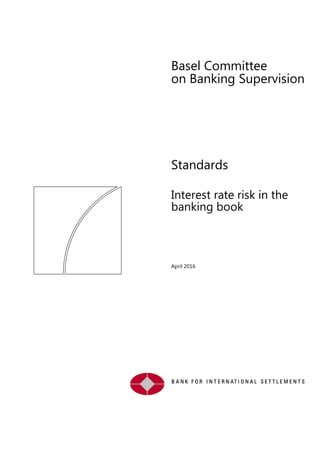
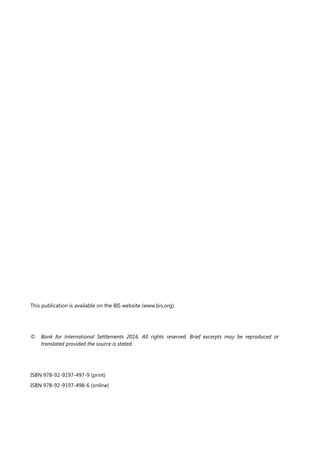













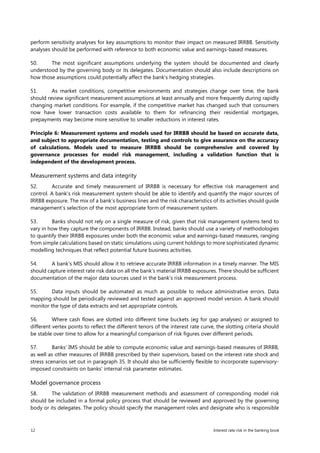

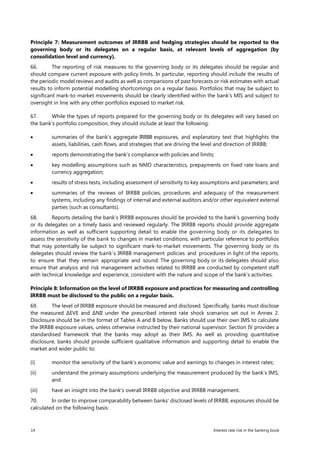
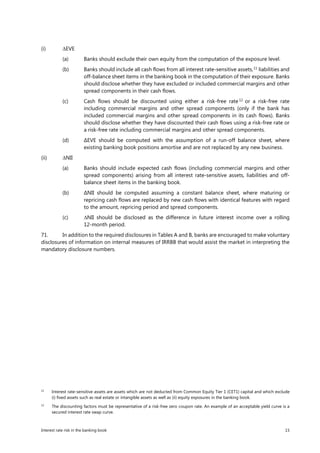



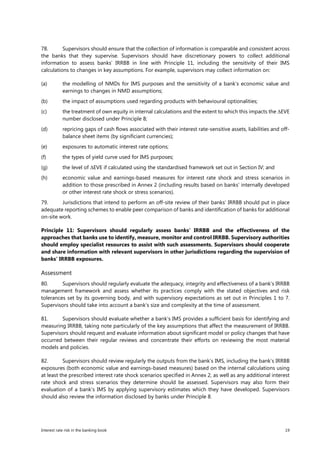




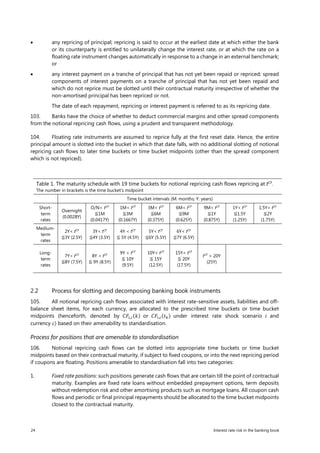
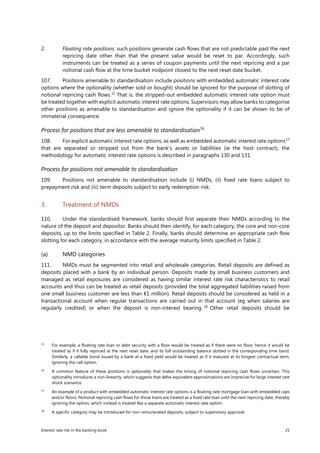




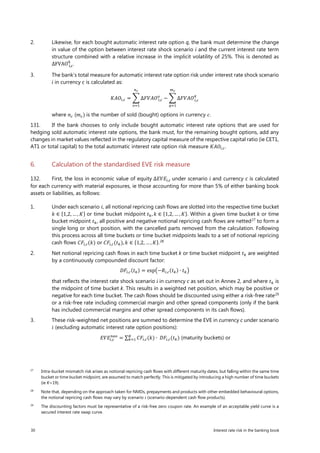
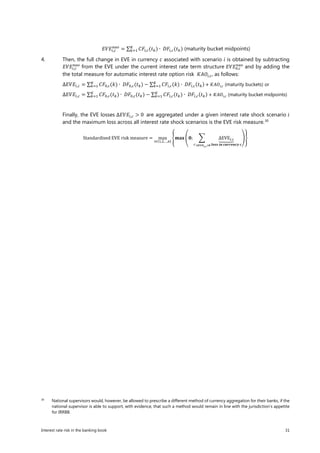




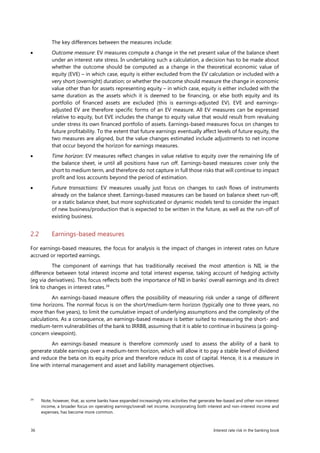


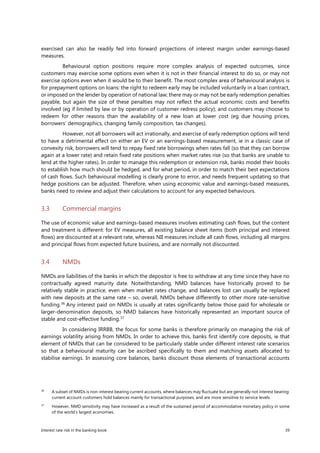






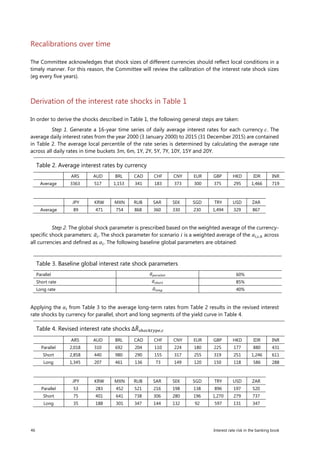
![Interest rate risk in the banking book 47
However, the proposed interest rate shock calibration can lead to unrealistically low interest rate shocks
for some currencies and to unrealistically high interest rate shocks for others. In order to ensure a minimum
level of prudence and a level playing field, a floor of 100 bp and variable caps (denoted as ∆𝑅𝑅�𝑗𝑗) are set for
the scenarios concerned, those caps being 500 bp for the short-term, 400 bp for the parallel and
300 bp for the long-term interest rate shock scenario. Supervisors may, applying national discretion, set a
higher floor under the local interest rate shock scenarios for their home currency.
The change in the risk-free interest rate for shock scenario j and currency 𝑐𝑐 can be defined as:
𝑅𝑅�𝑗𝑗,𝑐𝑐 = max �100, min �Δ𝑅𝑅�𝑗𝑗,𝑐𝑐, ∆𝑅𝑅�𝑗𝑗 ��, 45
where ∆𝑅𝑅�𝑗𝑗 = {400, 500,300}, for j=parallel, short and long, respectively.
Applying the caps and floors to the shocks described in Table 4 results in the final set of interest
rate shocks by currency that is shown in Table 1.46
45
In the case of rotation shock scenarios, ∆𝑅𝑅�𝑗𝑗,𝑐𝑐(𝑡𝑡1) cannot exceed 500 bp and ∆𝑅𝑅�𝑗𝑗,𝑐𝑐(𝑡𝑡𝐾𝐾) cannot exceed 300 bp.
46
Supervisors may also, applying national discretion, set a zero or negative lower bound for the post-shock interest rates, where:
𝑅𝑅�𝑗𝑗,𝑐𝑐(𝑡𝑡𝑘𝑘) = 𝑚𝑚𝑚𝑚𝑚𝑚�𝑅𝑅�0,𝑐𝑐(𝑡𝑡𝑘𝑘) + ∆𝑅𝑅�𝑗𝑗,𝑐𝑐(𝑡𝑡𝑘𝑘), [𝑧𝑧𝑧𝑧𝑧𝑧𝑧𝑧 𝑜𝑜𝑜𝑜 𝑛𝑛𝑛𝑛𝑛𝑛𝑛𝑛𝑛𝑛𝑛𝑛𝑛𝑛𝑛𝑛 𝑙𝑙𝑙𝑙 𝑙𝑙𝑙𝑙𝑙𝑙 𝑏𝑏𝑏𝑏𝑏𝑏𝑏𝑏𝑏𝑏 𝑠𝑠𝑠𝑠𝑠𝑠]�](https://image.slidesharecdn.com/irrbb-200117061333/85/Irrbb-51-320.jpg)